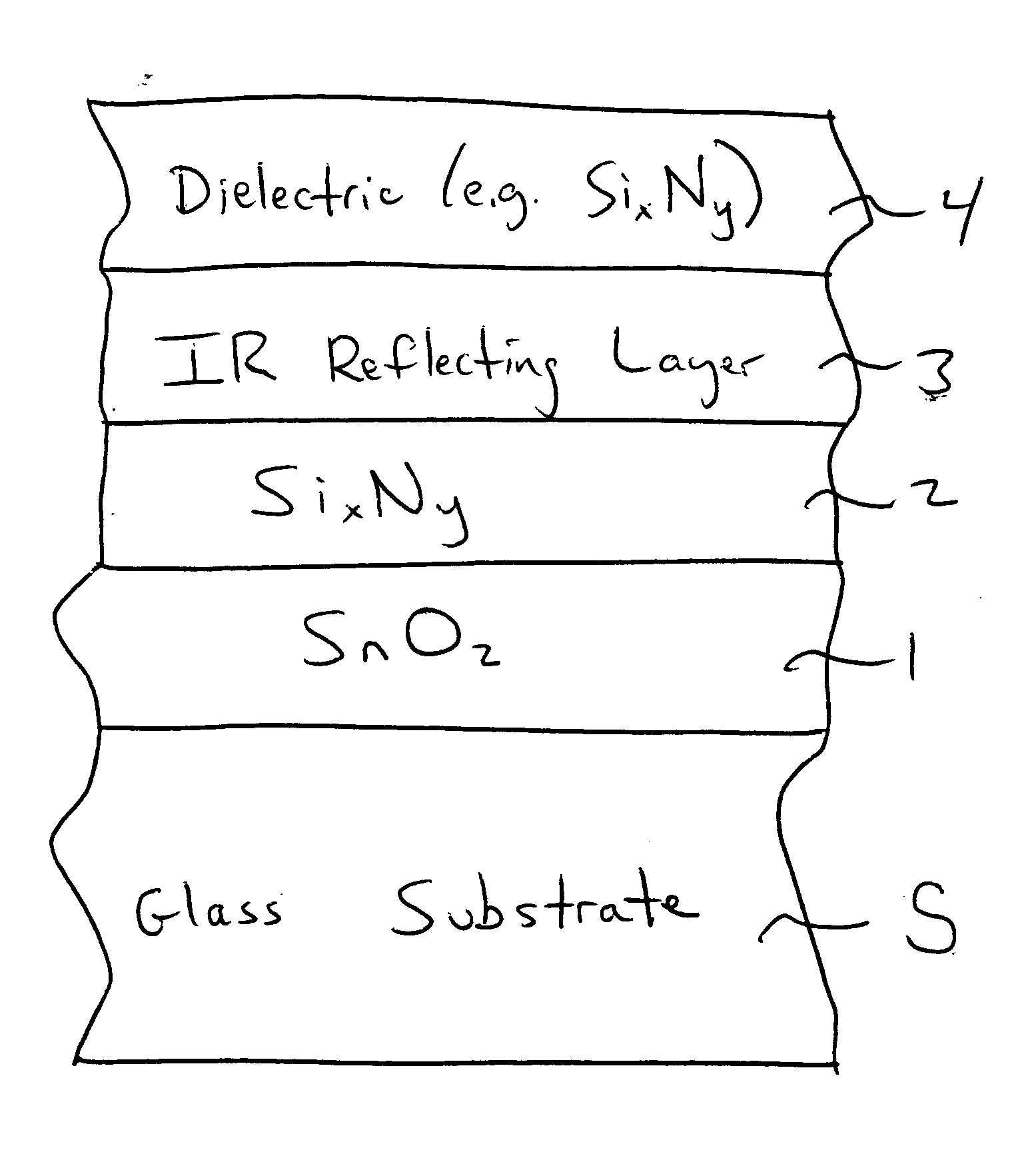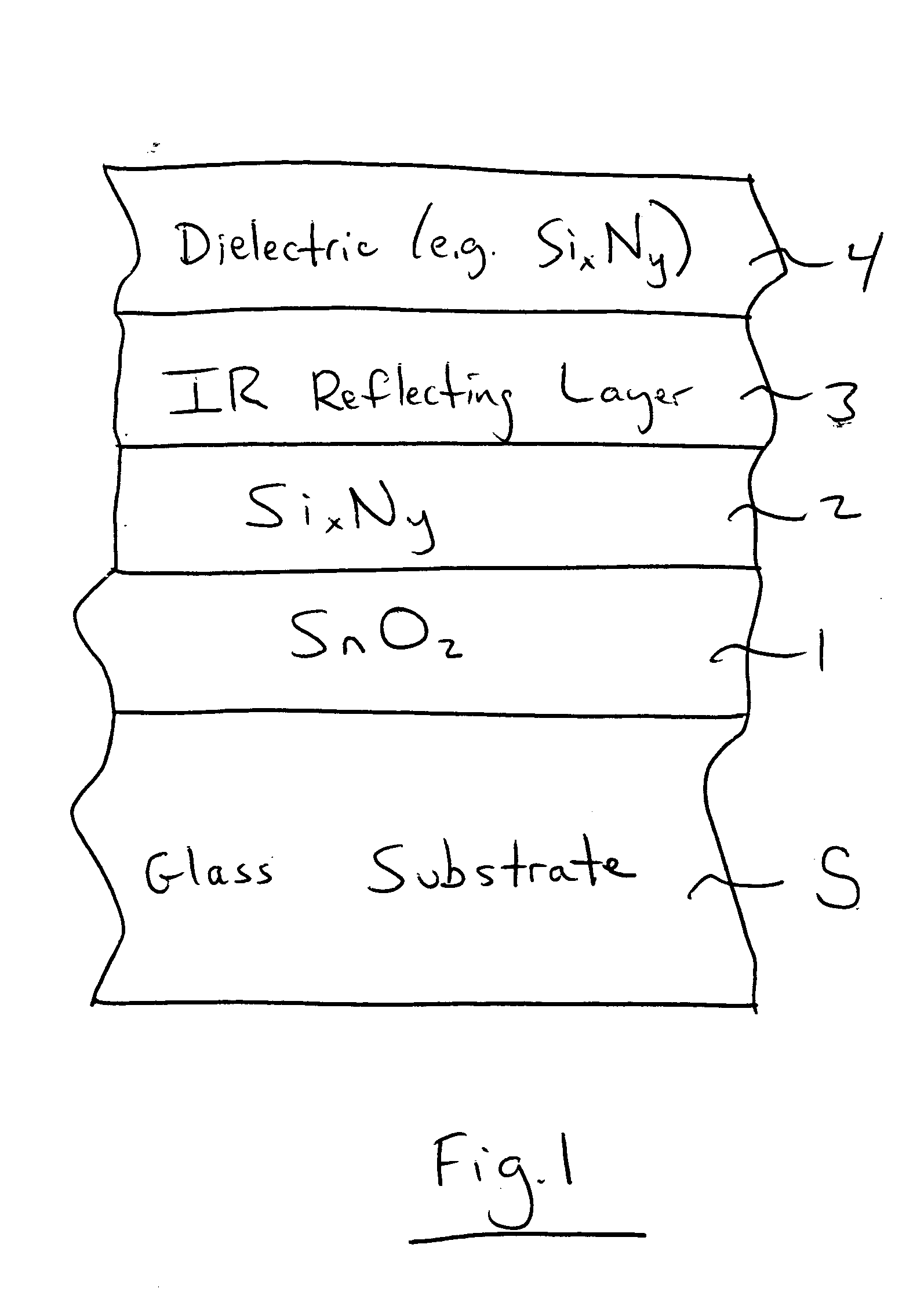Heat treatable coated article with dual layer undercoat
- Summary
- Abstract
- Description
- Claims
- Application Information
AI Technical Summary
Benefits of technology
Problems solved by technology
Method used
Image
Examples
Embodiment Construction
[0010] Certain embodiments of this invention provide coated articles that may be used in windows such as monolithic windows (e.g., vehicle, residential, and / or architectural windows), IG window units, and / or other suitable applications. Certain example embodiments of this invention provide a layer system that is characterized by at least one of: (a) efficient manufacturability; and (b) good mechanical durability. Coated articles may or may not be heat treated (HT) in different embodiments of this invention.
[0011]FIG. 1 is a side cross sectional view of a coated article according to an example embodiment of this invention. The coated article includes at least substrate S (e.g., clear, green, bronze, grey, blue, or blue-green glass substrate from about 1.0 to 12.0 mm thick), a dual layer undercoat including layer 1 of or including tin oxide (e.g., SnO2) and layer 2 of or including silicon nitride, infrared (IR) reflecting layer 3 of or including NiCr, Nb, NbZr, NbZrNx, or any other s...
PUM
| Property | Measurement | Unit |
|---|---|---|
| Fraction | aaaaa | aaaaa |
| Fraction | aaaaa | aaaaa |
| Fraction | aaaaa | aaaaa |
Abstract
Description
Claims
Application Information
 Login to View More
Login to View More - Generate Ideas
- Intellectual Property
- Life Sciences
- Materials
- Tech Scout
- Unparalleled Data Quality
- Higher Quality Content
- 60% Fewer Hallucinations
Browse by: Latest US Patents, China's latest patents, Technical Efficacy Thesaurus, Application Domain, Technology Topic, Popular Technical Reports.
© 2025 PatSnap. All rights reserved.Legal|Privacy policy|Modern Slavery Act Transparency Statement|Sitemap|About US| Contact US: help@patsnap.com


